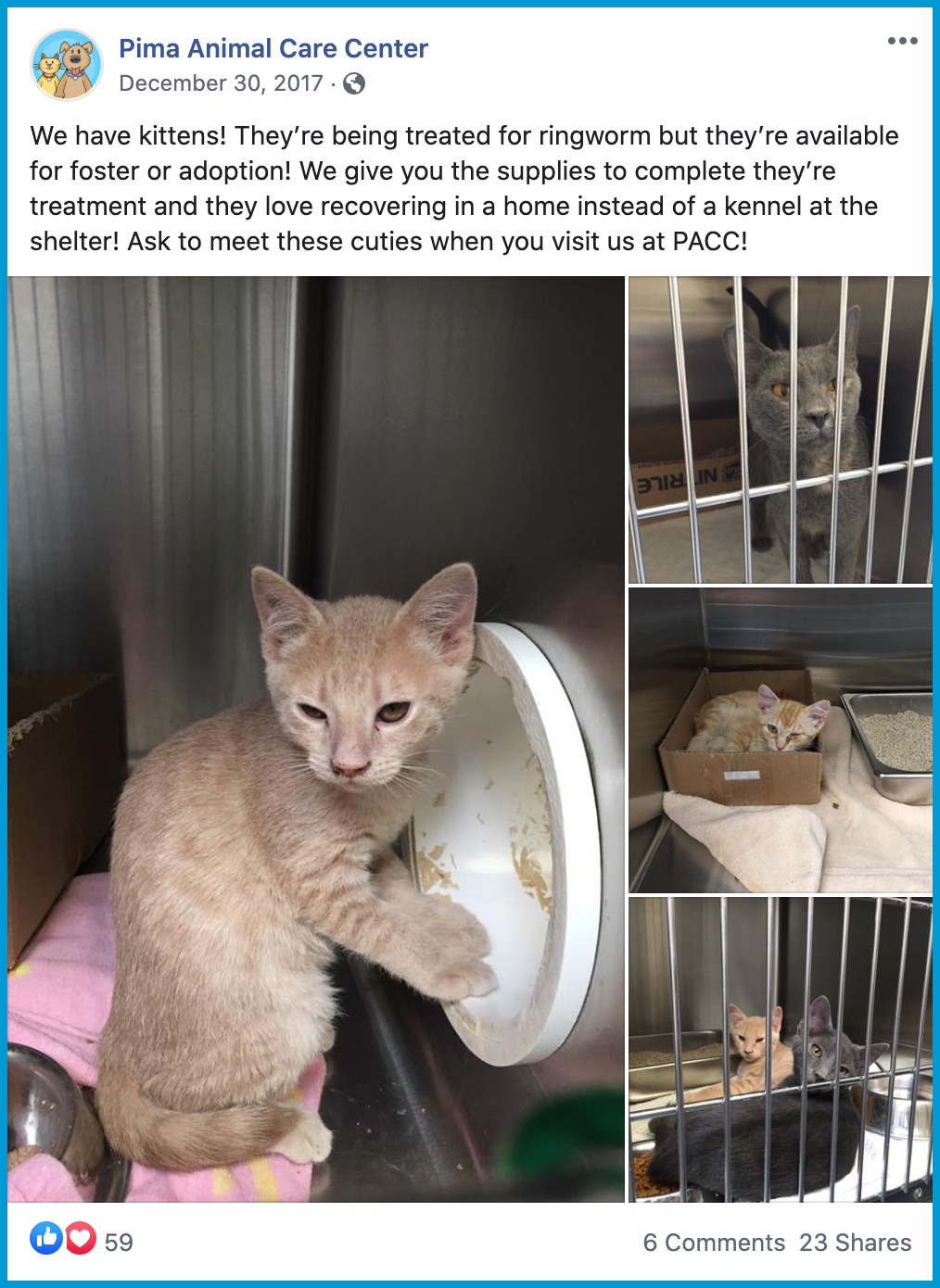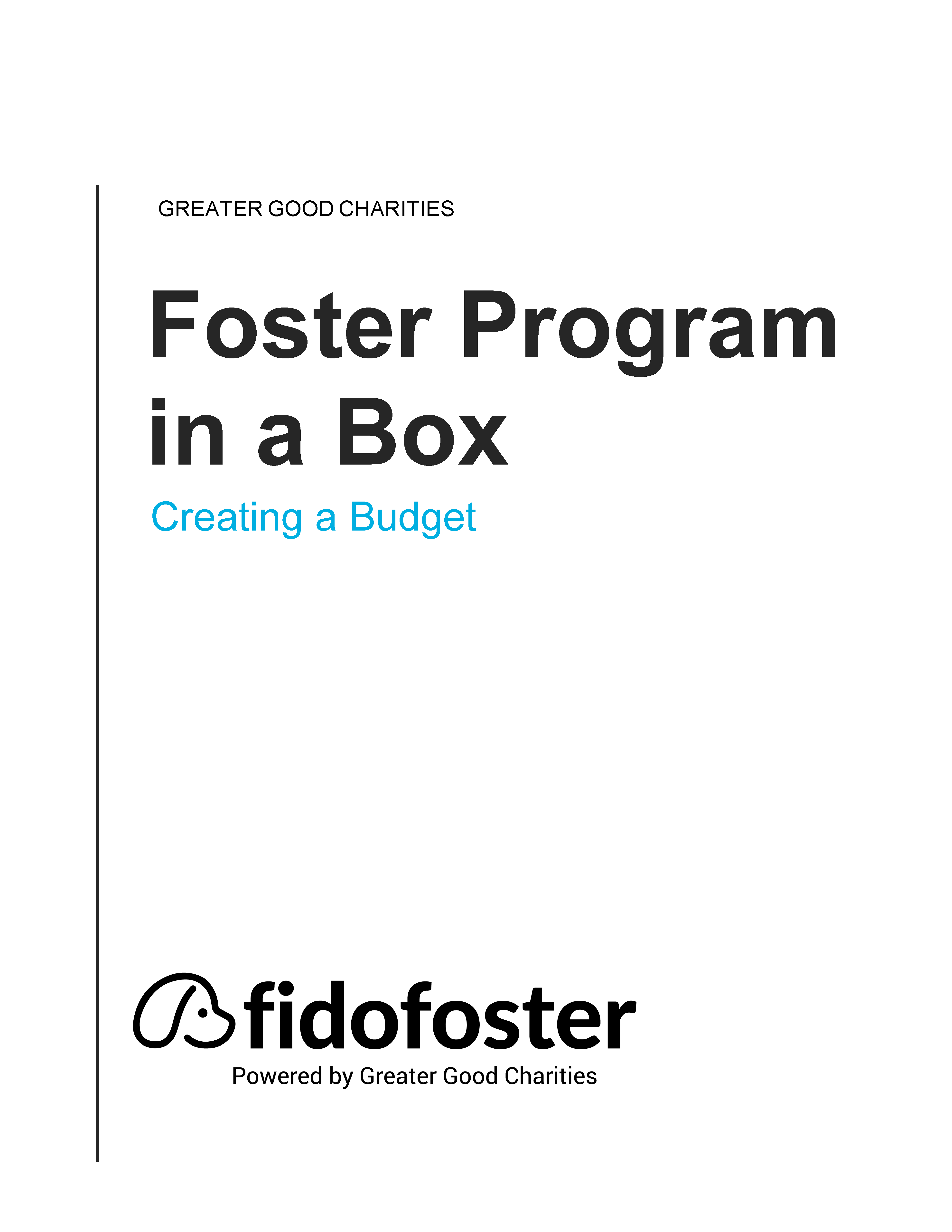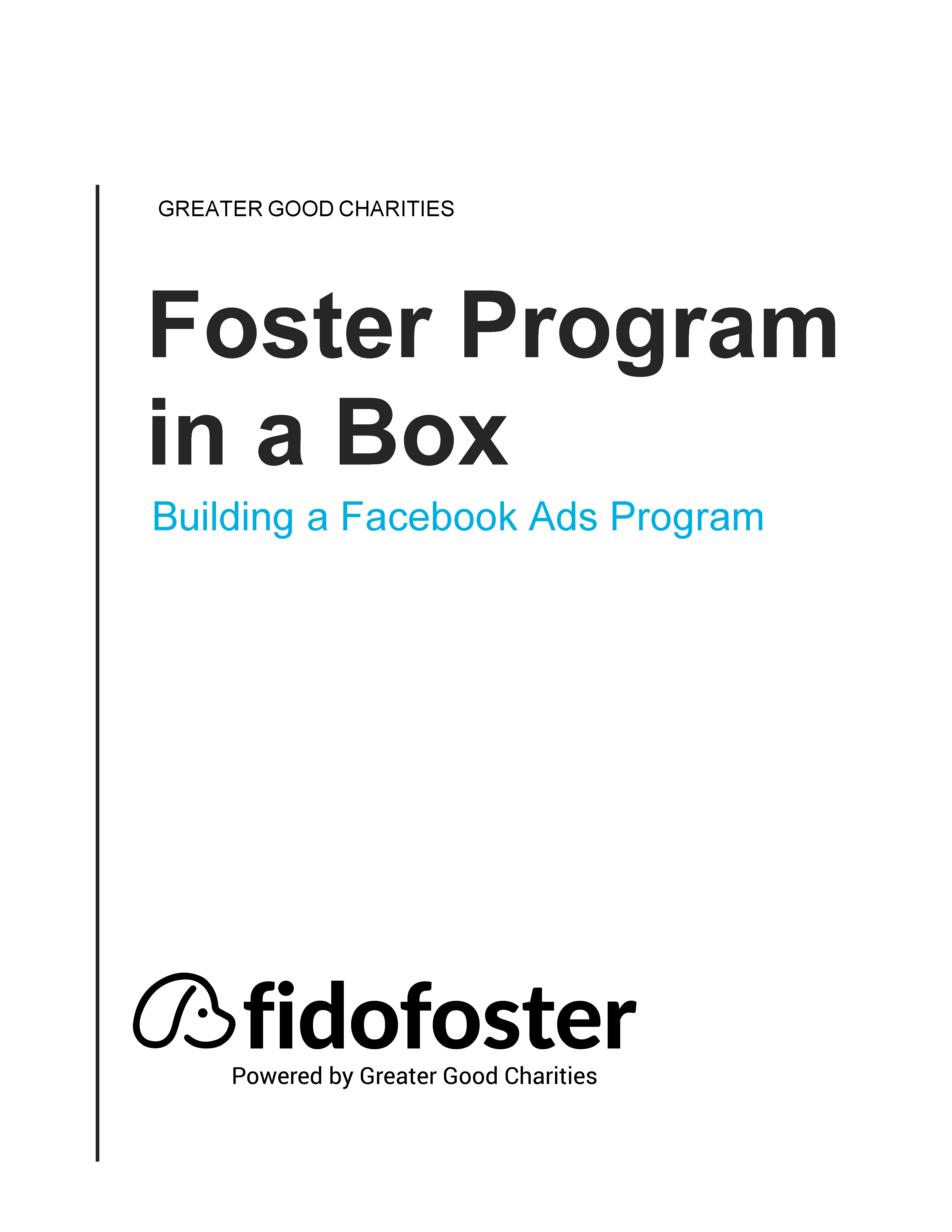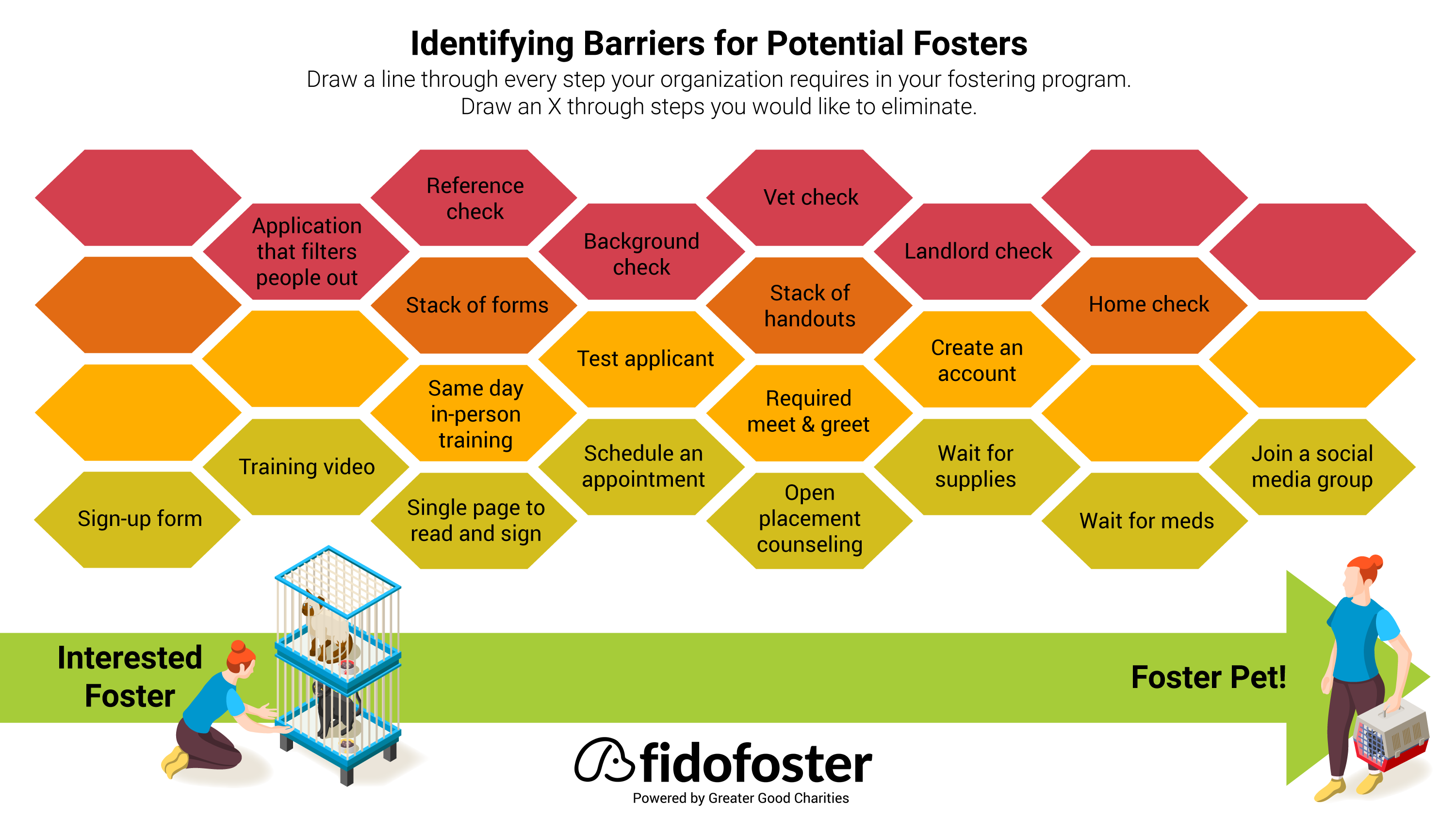Building Your Foster Program:
Identifying Where to Start
A shelter’s ultimate goal is to place as many pets into foster and forever homes as possible, so they can keep helping more pets in their community.
However, if they don’t move strategically, they risk running out of resources or over extending themselves. Our Foster Program in a Box is designed to help shelters and rescues build a successful foster program. Get started today with the documents and resources in this article.
Remember, you save many more lives by creating a sustainable program than by burning out in a handful of months.
1. Get Your Data
Either you need to identify the population of animals that need help in your shelter or in the shelters near you. It doesn’t do much good to start a hospice cat foster program if the shelter is already sending them all to a rescue partner. If you are a municipal shelter or hold a municipal contract, you have access to the data within your own organization. If you are a private group, that same data is available to you through your governmental public records request process. Some municipalities will make this a very easy automated and free process, some will not.
2. Analyze Your Data
Inspired by Target Zero in collaboration with American Pets Alive!, Austin Pets Alive!, Shelter Animals Count, Best Friends, The Humane Society of the United States, Team Shelter USA, LLC., Million Cat Challenge, Alley Cat Allies, Koret Shelter Medicine Program at UC Davis, Maddie’s® Shelter Medicine Programs at Cornell University, University of Florida and University of Wisconsin, Rehome by Adopt-a-Pet.com & The PetCo Foundation, ASPCA, National Animal Care & Control Association and countless animal shelters throughout the country.
3. Create a Budget
We’ve put together a quick start budget development guide for a foster program with the help of our friends at Cat Adoption Team in Oregon. By figuring out the basic needs, you can identify where you need additional support and what to ask for from your donors.
4. Gather Supplies
We gathered this supply list based on our collective experience of fostering for over a dozen different shelters and rescue groups. This list is a great starting point to assess if you can meet your foster’s needs.
Remember, supplies don’t necessarily cost money. Some of the most valuable supplies you can have are an emergency contact list, a webpage full of foster tips and tools, and a way for fosters to connect with and support each other!
5. Recruit Fosters
Fosters come in all shapes and sizes! When we first #StayHomeAndFoster launched at GreaterGood.org, we set up Facebook ads targeting anyone who displayed an interest in animal rescue, animal adoption, or animal welfare. We didn’t limit the exposure based upon age or income level, we didn’t eliminate certain zip codes or neighborhoods: we just let Facebook’s algorithm figure out who was most likely to sign up, and the results were amazing. Not only did we see over 80,000 potential fosters from all over the nation, but we found that about half of our signups had no pets or kids in the home, and roughly 60,000 of them were under the age of 34! Download our guides for tips on recruiting fosters in your area.
6. Onboard
Take a moment to map out the steps it takes for a foster parent to go from interested to actually having a pet in their home. The more steps you require, the more fosters you are eliminating. Use our Barriers worksheet to circle all the steps your organization requires, then put a big X through the ones you want to eliminate.
Pima Animal Care Center in Tucson, AZ has sent over 10,000 pets to foster in the last two years – they don’t require any of the orange or red steps. Not only have they NOT seen an increase in returns, but they have also found that their shelter and community are safer for pets and people.
7. Communicate
Now that you have a foster program, let’s talk about it! With your community, with your organization, and with your active foster parents.

To make sure your foster program is a success, talk to your new foster families about what you are working on, what they think is working or needs improvement, and what they should expect from a brand new process. If you expect them to do marketing and find adopters, tell them from the get go. If you are having trouble getting KMR or entering data, tell them when you need help.
Foster parents themselves are your new best resource for ideas and support.












